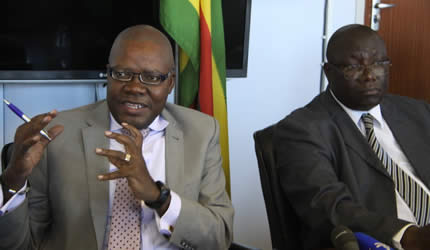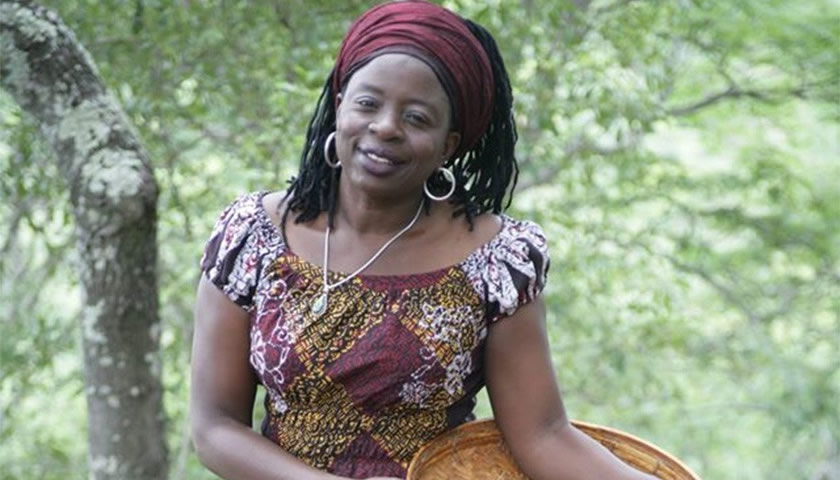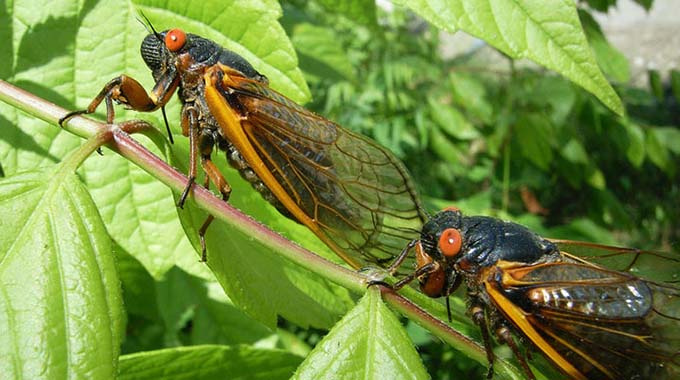Cecil John Rhodes, the baggage of our history
not exactly him in person. Rhodes died at Muizenberg in Cape Town on March 26 1902. They carried his body from there and buried it at Matopos near Bulawayo. It lies in a granite tomb covered by concrete and there is a brass plaque with his name on it.
Rhodes’ grave is a national monument and thousands of tourists (mostly white) visit it throughout the year. For some of us Africans who have visited his grave, we are reminded and troubled by Cecil John Rhodes’ legacy. Only thirty-three years ago, this country was called Rhodesia, named after Cecil John Rhodes, one of the greatest imperialists of all time. We cannot run away from history, however painful it might be. At the same time, there are reminders of the past that we can change, but we choose not to. Colonial names are part of the baggage we gladly and ironically carry.
Almost two weeks ago, among the finalists in the primary schools quiz at Great Zimbabwe Monument was Cecil John Rhodes School from Gweru. The quiz was held during the Unesco World Heritage workshop and we gathered to witness these children celebrate International Museums Day. From right across the five regions of Zimbabwe, there were three champions representing their respective schools. There was Hwiru from Gutu, Dudley Hall from Norton, Chipinge Junior from the Eastern Region, Mahlabezulu Primary from Bulawayo in the Western region and Cecil John Roads School or in short, CJR from Gweru, in the central region.
The CJR team of three looked just right in their private school neat green uniforms, blazers with logos, shoes and socks. The two girls and one boy even looked healthier than the others. Some of their non-participating fellow students from CJR proudly stood further away from the podium with headphones and phones in their pockets while barefooted and hungry-looking students from nearby Nemamwa Primary School looked at them with admiration and envy.
The quiz included history and knowledge about Zimbabwe and Africa in general. At one stage there were silent images of people dressed in pre-colonial leather skirts grinding grain on stones and some carrying drums, axes and other tools used in pre-colonial days. The students were asked to identify each item. They got the questions mostly right.
All odds were in favour of Cecil John Rhodes School. How could they possibly not win when they have television, computers and radios at home giving them information about the world all the time? As expected, CJR got most of the computer questions right. Questions like what is a PIN or what is a movable portable computer brought some interesting answers from Hwiru. Each time Hwiru got a question, we laughed because we believed they would not win the quiz.
Then CJR started floundering on questions like: Name two couples buried at Heroes Acre. CJR missed the word “couples” and named only one couple: Joshua Nkomo and Mama Mafuyana. Then they did not know the Shona name for mbezo, the small axe used for carving wood in traditional culture. Hwiru from rural Gutu started getting the entire questions on history right.
As the competition came to a close and the questions included when the African Union was formed, Hwiru quickly moved to second place, leaving Chipinge in third place. To our surprise, CJR came fourth. By the time of the award presentation, the headgirl at CJR, who was in the competing team, could not stop crying.
I went over to her, took her hand and said, “Usacheme, do not cry, it happens.” But that made her cry even more, reducing herself to hysterics. The other women judges said, “Where are the teachers from CJR? They should comfort this distressed child. She has the drive in her to win. Ane shungu too much.” Someone pointed to two women crying not too far away from the crowd and said, “Those are the teachers or maybe the parents.” And there they were, sobbing. Trying to wipe away a tear, one of them said, “CJR deserved to win.” Then she walked over to console herself with the other CJR students.
We all looked at each other with discomfort. Did she mean a school named after one of the greatest empire builders deserved to win because it had the reputation of winning already? We were sorry for CJR but we soon forgot their sorrow and joined in celebrating Hwiru’s win in second place to Dudley Hall. Hwiru showed that a rural school with less resources and no access to computers, television and adequate books can still perform very well.
As the CJR bus departed bound for the three-hour drive to Gweru, full of unhappy children, their teachers and parents, one kid from Nemamwa Primary School jeered at them saying they belonged to a white privileged school so they deserved to lose. “CJR, chikoro chevarungu, madya izvozvo!” That was not fair on the children, we all said. Besides, CJR used to belong to white kids only in the past and that was long before independence. It was not their fault nor was it the parents’ fault either to belong to a school named after Cecil Rhodes.
One of the staff members from museums and monuments then commented that CJR should change its name because we should not be reminded of Cecil Rhodes’ legacy any more. The past was gone. This was followed by a discussion which seemed to be more of an argument between some teachers, officials from the Ministry of Home Affairs, Museums and Monuments and the National Archives. Some people argued that we have the tendency to mistakenly associate all schools with colonial names to have better education. That is why we still hold on strongly to schools like Prince Edward, Roosevelt, Churchill, Courteney Selous, Blakiston, Queen Elizabeth Girls and others.
The students at these former colonial whites only schools will need to know the history of the man or woman named after their school, probably the same way we used to study the life of Cecil Rhodes back in the colonial school days.
We used to know a lot about Cecil John Rhodes — the year of his birth, where he was born, when he left England, what he did in South Africa, what he did in Southern Rhodesia, the company he owned called the British South Africa Company and how that company came to rule us, the natives of Southern Rhodesia.
In Grade Four or Five at St Columbus village school in Hwedza, I remember our teacher, Miss Rwodzi, teaching us that Rhodes wanted to place the British flag in every country. She taught us to draw the Union Jack and memorise the meaning of the colours on it.
She said the red cross that went up and down represented the cross of St George who was the saint of England. The other red cross that went diagonally represented the cross of St Patrick. He was the patron saint of Ireland and the white cross that also went diagonally but lying on a blue background was the cross of St Andrew, patron saint of Scotland.
In Grade Six Miss Rwodzi expected us to draw the picture of each of the big men in Empire history. Because of who he was, Cecil John Rhodes was key among the men. Although my memory in those days was impeccable, I was not good at drawing anything on the ground or on paper. But one boy in our class called Chamunorwa had a talent in drawing pictures of anything from dogs, rabbits, mountains, people, anything. That boy could look at you once and in no time at all he would draw your face on the ground with his finger and you would come out just as you are. One time he drew Cecil John Rhodes’ face. He drew him so well and you could see the fine hairs of his moustache, the tie, jacket, buttons and jacket with pockets and a handkerchief. Miss Rwodzi gave Chamunorwa a blue crayon and he added the colour of Cecil John Rhodes’ eyes. They were blue and scary. We said it was not possible for a person to have that colour in their eyes, kunge kitsi. But Miss Rwodzi said some white people were like that and others even had grey and green eyes. At that time most of us had never seen a white person up close.
Years later, we now know that Rhodes could not have achieved the colonisation goals without the support of missionaries, hunters, traders and explorers. Our old towns, streets and schools in Rhodesia were named after men who helped Rhodes in his mission to conquer and civilise us.
These names include Henry Hartley, Thomas Baines, Frederick Courtney Selous, Leander Starr Jameson and others. With the help of hunters like Henry Hartley and Frederick Selous, Rhodes was able to take much of the land from the Shona and the Ndebele. Frederick Selous was a hunter who helped Cecil John Rhodes’ Pioneer Column to track the country in order to colonise it in September 1890. At the same time, Selous got Lobengula’s permission to cut a road linking Matabeleland and Mashonaland called Hunters’ Road. Its main purpose was to facilitate the transportation of ivory. With John Moffat’s help, son of the missionary Robert Moffat, Rhodes deceptively got Lobengula to sign The Rudd Concession in which Lobengula unknowingly handed over the land and minerals of this country.
Cecil John Rhodes’ gray statue at the back of the National Archives is faded and old. It could do with a wash and maybe some waxing and polishing. Here stands the statue of a man whose illegal appropriation of our land and minerals made him very wealthy. Among many of his business endeavours, Cecil John Rhodes amalgamated the De Beers mines and controlled over 90 percent of the world’s diamond output back in 1891. He was Prime Minister of the British Cape Colony and president of the British South Africa Company. He formed Nyasaland (now Malawi), Northern Rhodesia (now Zambia) and Southern Rhodesia (now Zimbabwe).
Although Rhodes often acted in the name of the British Empire, some people argued that he was only interested in his personal wealth. Not many people understood him. Even when you study Rhodes’ life using vast materials available today, his story remains complex and his sexuality a mystery. Rhodes never married and he enjoyed the company of men like Dr Leander Starr Jameson. He was particularly fond of his private secretary Neville Pickering. Pickering died in Rhodes’ arms.
A paper published in 1897 in the, “Imperialist” in England, accused Rhodes of “bribery and corruption”, “neglect of duty” and “harshness to the natives”. Rhodes’ life-long partner, Starr Jameson, quickly defended Rhodes by writing a postscript saying that some of Rhodes’ best friends were the good blacks. Jameson said Cecil John Rhodes’ “favourite Sunday pastime was to go into the De Beers native compound, where he had built them (the blacks) a fine swimming bath, and throw in shillings for the (naked) natives to dive for. He knew enough of their languages to talk to them freely, and they looked up to him indeed, fairly worshipped the great white man.”
Thirty-three years after independence, what do we do with the ghosts of historical figures like Rhodes buried on our rocks and perhaps smiling and thanking us for keeping their names on primary schools?
The legacy of Cecil John Rhodes’ work, like that of many colonialists before and after him, will remain with us forever.
Our encounter with colonialism is irreversible. The ghost of a man called Rhodes and his empire building legacy continues to tell us stories of dispossession, war, land, diamonds, race, education and many aspects of our past. We cannot change history. But we can bring out the truth in that past history to help us understand the present.
Dr Sekai Nzenza is a writer and cultural critic. She holds a PhD in International Relations and works as a development consultant.








Comments